On the night of October 24, 1944, in the last year of World War II, the submarine USS Tang was sinking during the attack on a Japanese convoy in the Taiwan Strait. Curiously, she had been hit by a torpedo of her own that made a circular trajectory and exploded astern of her. Most of the crew perished, but nine men managed to escape from that tomb 55 meters under the sea thanks to a Momsen's Lung, a device invented in 1939 by an officer to get out of a similar situation.
The USS Tang has quite a reputation in the US, where she not only appeared in a 1951 film ( Submarine command , by John Farrow and starring William Holden, although in the film she is called Tiger Shark ) but her case is also remembered through a digital recreation of the National WWII Museum in New Orleans. Built at the Californian Mare Island Naval Shipyard and launched in August 1943 named after a type of tropical fish, she was of the Balao class. , a version of the Cat with a thicker hull, which allowed him to descend deeper. So improved, in fact, that the US Navy made one hundred and twenty units.
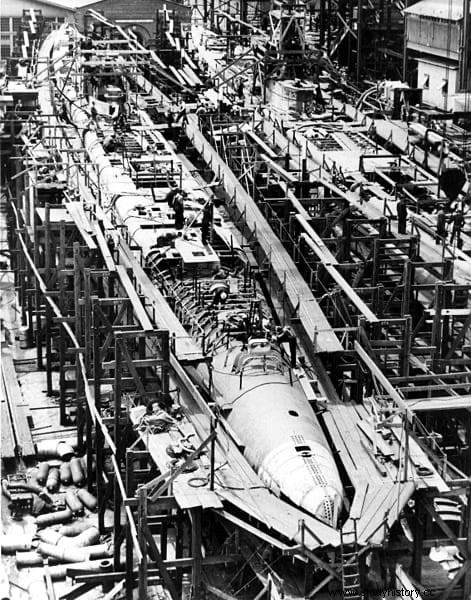
She measured 99 meters long by 8.3 wide, displacing 1,470 tons on the surface (2,040 submerged) and reaching a speed of 37.5 kilometers per hour (20.2 underwater). She could reach depths of 180 meters and was armed with 24 torpedoes and two deck guns. After nearly three weeks of training in San Diego, she was posted to Pearl Harbor under the command of Lieutenant Commander Richard H. O'Kane, an experienced Marine who had served on the USS Chester cruiser. and the destroyer USS Pruitt before she moved on to the submarine weapon, where she was an officer on the USS Wahoo .
On January 22, 1944, she set sail for her first mission, which was to take place around the Carolinas. There she located a Japanese convoy which she attacked, evading depth charges from her escort and sinking the freighter Gyoten Maru . Exactly one month later she ran into another convoy, destroying the Fukuyama Maru merchantmen. and the Yamashimo Maru . Hardly two days passed and new victims were claimed, the Tatutaki Maru and the Echizen Maru . On February 26, before returning to port to fix a leak, she fired her last torpedoes, killing the Choko Maru .
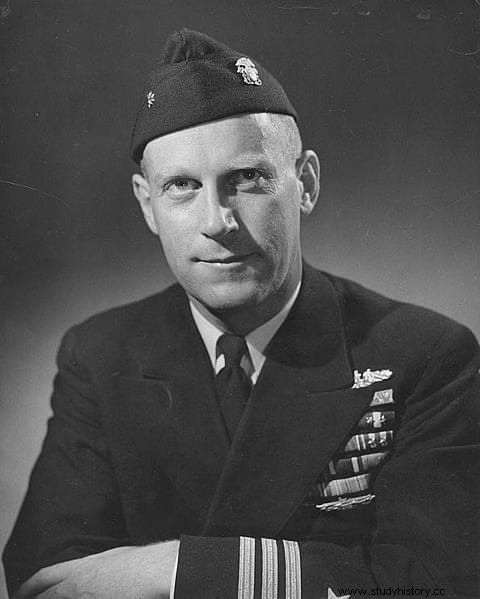
On March 16, after a refit carried out at Midway, she put to sea again for Palau and the Gulf of Davao. This time he did not carry out an attack mission but dedicated himself to rescuing the surviving crews of the downed planes in the Truk Lake area (also called Chuuk, an atoll that is part of the Carolinas archipelago), saving the lives of 22 in collaboration with a Vought OS2U Kingfisher observation seaplane and taking them to Hawaii.
She left again on June 8 for the China Sea, the one located between this country and the Korean peninsula. She encountered the first convoy two weeks later, six large ships guarded by sixteen escort ships, against which she fired several torpedoes, sinking the Tamahoko Maru , Tainan Maru , Nasusan Maru and Kennichi Maru . On the 30th of the same month she crossed paths with the lone troop carrier Nikkin Maru , who also ended up on the seabed with the more than three thousand soldiers she was carrying. The next morning it was the turn of the freighter Taiun Maru , which sailed alongside the oil tanker Takatori Maru; He was able to flee at first, but the submarine chased him and killed him. Four days later, very close to the Chinese coast of Dairen - to the point that the submersible nearly ran aground in the operation - she attacked the Asukazan Maru , whose survivors were rescued by local fishermen. She that afternoon she rounded off the day with the Yamaoka Maru , from which she rescued a castaway, and the next night the Dori Maru she finished the mission.
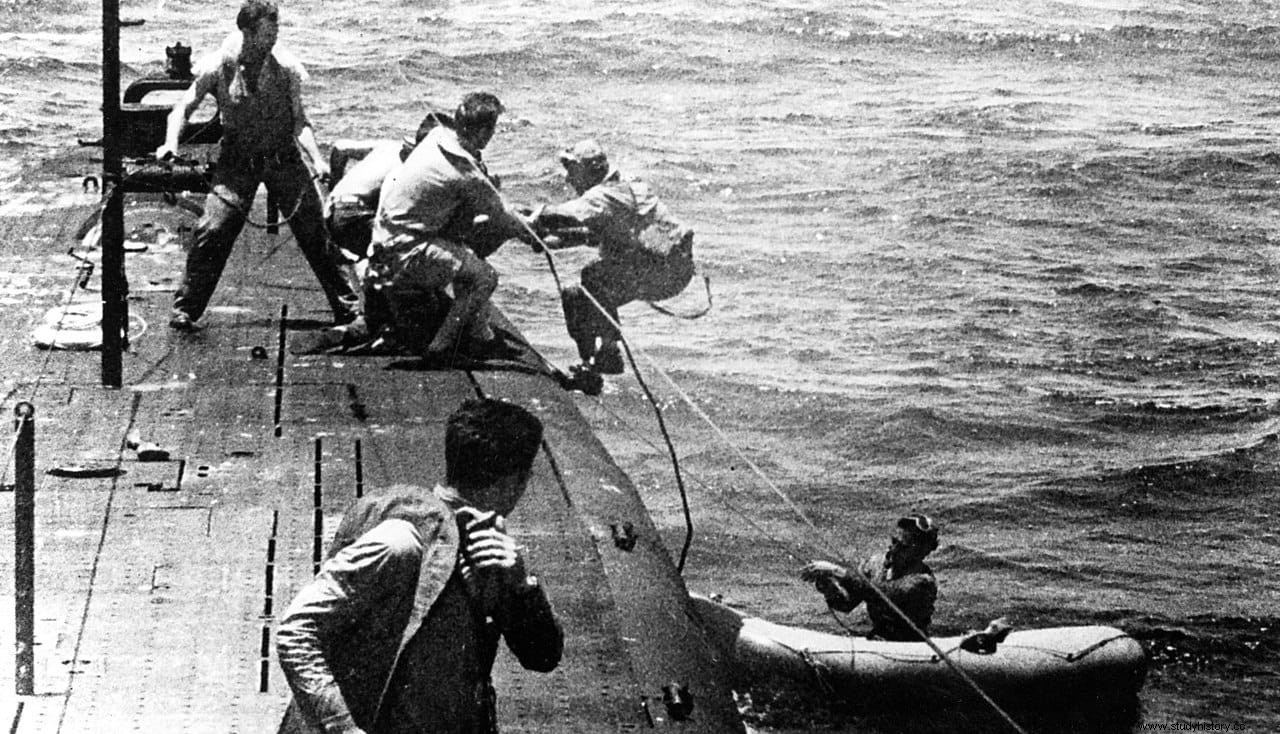
From July 31 to September 3 the USS Tang she operated in the vicinity of Honshu Island. On August 11 she sank the freighter Roko Maru and another ship that accompanied it, dodging depth charges for more than half an hour. During that month she destroyed an armed yacht, the patrol boat Nansatsu Maru , to the troop transport Tsukushi Maru and the tanker Nanko Maru . The American submarine was revealing itself as a fearsome danger for the Japanese navy, which would still have to suffer its onslaught because on September 24, after the corresponding period of rest and repairs in Pearl Harbor, it set sail once again heading into the Strait of Formosa , avoiding enemy patrols and mined areas. Thus came the night of October 10, in which the freighters Joshu Go and Ōita Maru they foundered, followed thirteen days later by one of the most intense battles it had to endure.
TheUSS Tang she attacked a large convoy consisting of three tankers, a transport, a freighter, and several escorts. The torpedoes fired hit their targets, but as the submarine was about to launch itself at a tanker, one of the transports tried to ram it; With no time to dive, she managed to dodge the crash… to meet the tanker's bow, which was also coming for him. A clever maneuver not only avoided it but also caused the two enemy ships to collide. She then fired two torpedoes at them, before fleeing at the approach of a destroyer; she managed to sink them both. But the thing did not end there because the next morning, sailing near Niushan Dao (an island located off the coast of the Chinese province of Fujian, at the northern end of the Taiwan Strait), he located another convoy with which he was going to change your luck.
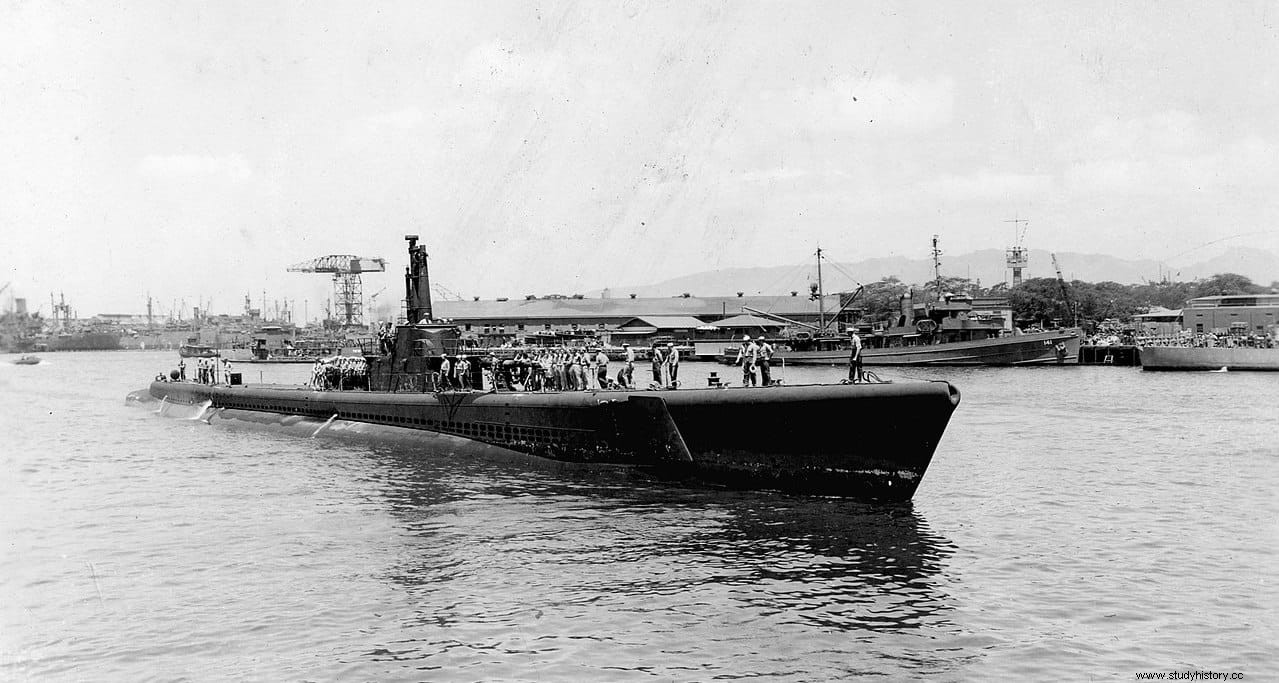
And that everything started well; the escorts must have spotted the submarine and, since it was not yet dawn, they turned on their searchlights to locate it, automatically becoming illuminated targets. The USS Tang she fired at a huge transport, a somewhat smaller one, and a tanker; She sank with a tremendous explosion that also hit the escort destroyer, while the first transport was afloat but disabled. The account was expanded with two freighters, the Kogen Maru and the Matsumoto Maru . Thus night fell and came the unexpected end to that nightmare that tormented the Japanese, whom he had sunk 33 ships (a record for a single submarine and for a single commander) with a total of 116,454 tons, ahead of the USS Tautog and the USS Flasher .
Around 02:30, Commander O'Kane ordered the last remaining torpedo to be fired. It was a Mark 18, an electric model designed specifically for submarines and manufactured from 1942; It promised a lot because it did not create a trail in its trajectory, making it difficult for the enemy to see it, but in return it caused quite a few technical problems:it was slow, it had to be constantly recharged and the battery suffered at low temperatures. The worst, however, was that it repeated the same failure of a previous model, the Mark 14:the circular path it took when it did not hit the target, returning to the submarine that fired it. In October 1943 theUSS Flying Fish she had come close to suffering precisely that, narrowly escaping.
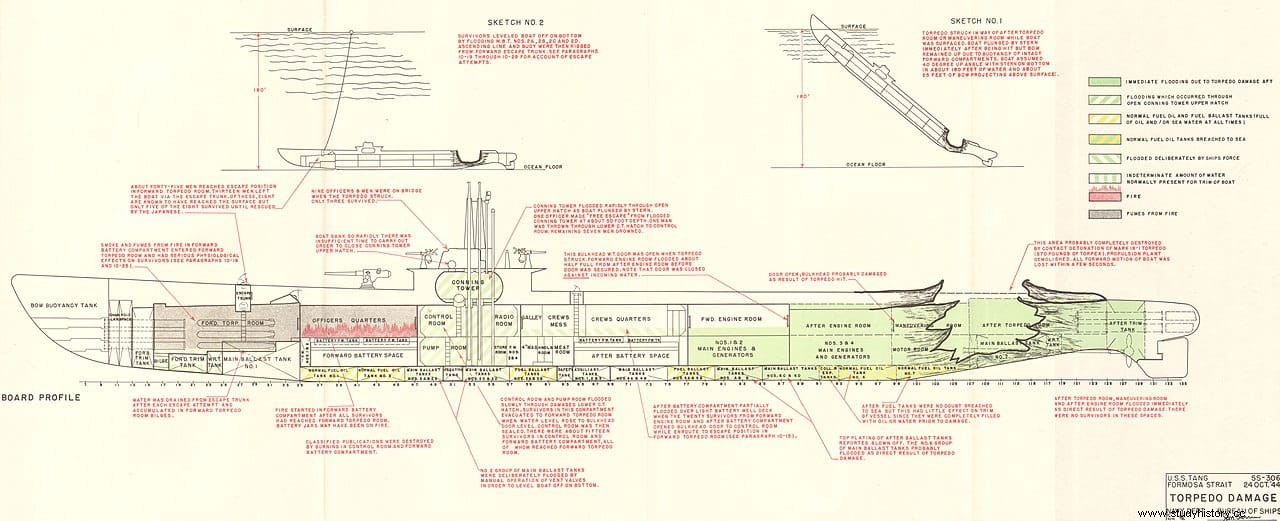
The USS Tang she was not so lucky and the torpedo hit her in the stern 20 seconds after being fired. Three of the rear compartments of her were flooded and the ship went to the bottom, to 55 meters of depth. The commander and nine of those on the bridge were able to get out but the 30 men who were not killed in the explosion were trapped in the forward torpedo room.
They had the so-called escape trunk there or rescue trunk, a small compartment that submarines have so that their sailors can escape in case of sinking. In this case they had to wait because a Japanese destroyer was dropping cargoes on them and they also had to put out a fire in one of the batteries, as can be seen in the diagram above.
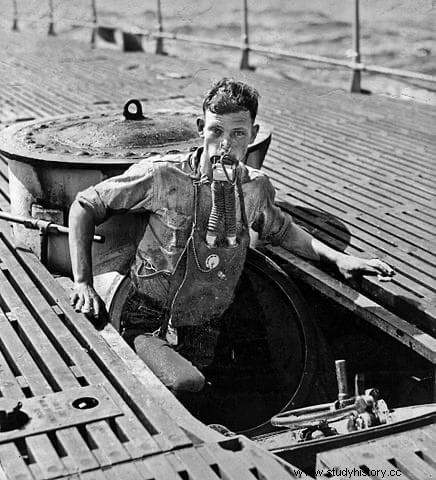
The crew of the USS Tang they didn't start dating until around 6:00, using a Momsen Lung to rise to the surface. The Momsen Lung, in Spanish, was an individual breathing system, a rubber bag with two tubes through which the user had to breathe:one exhaled the carbon dioxide that a bottle of soda lime eliminated and the other breathed in oxygen.
In addition, once outdoors, it became a kind of mini-life jacket that helped keep you afloat. It was named after Charles Momsen, an American sailor who served in the submarine weapon and invented it in 1927 as an alternative to a previous bell that he devised to attach to the hatch of submersibles and be able to extricate trapped people, but which did not arouse interest. in the army.
The Lung was based on the same principle - to balance the pressure - and it was accepted; That same year also, since the tragedy of the S-4 weighed heavily, a submarine that sank in Cape Cod and inside which several sailors survived for three days at the bottom without anyone being able to get them out.
The device was incorporated into submersibles from 1929 and ten years later had the opportunity to debut when, during a test dive, the USS Squalus she was flooded and was immobilized 74 meters deep. Using Momsen's device, 33 of the 59 crewmen managed to save themselves (the others drowned when they entered the water at first); by the way, the submarine was refloated months later and was renamed USS Sailfish , successfully fighting in the war.
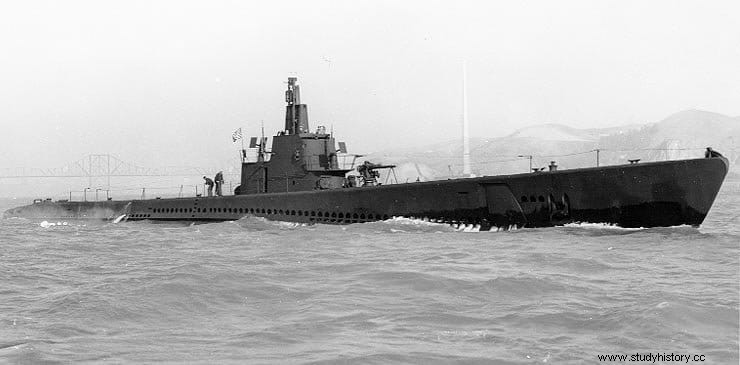
On the USS Tang , the Momsen Lung allowed thirteen of the men who had been trapped on the ship to escape, although it happened to about nine who were on the bridge:if only three of these were rescued after spending eight hours at sea, those who came out of the torpedo room saved five lives.
That is, eight in total, to which was later added another who was also on the bridge and had managed to stay afloat with the trick of inflating his pants. They were picked up by the Japanese frigate CD-34 , in which they were not treated exactly kindly because it had on board many wounded castaways from the ships sunk by the submarine.
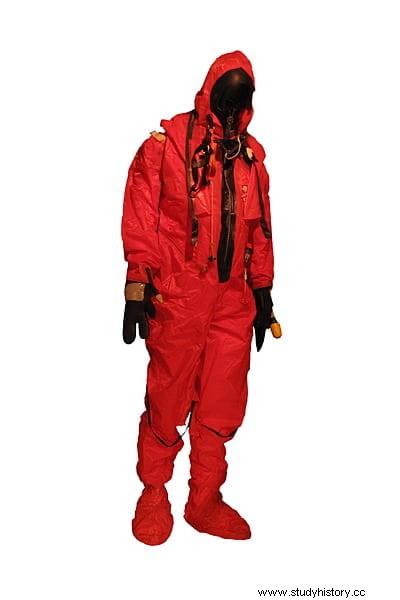
Those nine sailors were interned in the Ōfuna concentration camp (in Kamakura, outside Yokohama), special for naval and intelligence personnel. A harsh place, where prisoners were locked up in isolation cells and tortured interrogations were practiced, to the point that the Red Cross was not allowed to pass; its director, Commander Yokura Sashizo, would be sentenced to 25 years in prison for war crimes. However, Ōfuna was only a temporary prison and so the American sailors were transferred to the Ōmori camp near Tokyo. This was not a paradise either and under the command of the brutal Mutsuhiro Watanabe (who managed to flee from justice) all kinds of excesses were committed, although O'Kane considered it a better place than the previous one.
O'Kane was precisely decorated with the Medal of Honor after his release and returned to active duty in several submarines, becoming a rear admiral and dying of pneumonia in 1994; a destroyer today bears his name. The Momsen Lung it continued to equip US Navy submarines until 1962, when it was replaced by the Steinke Hood (an inflatable lifejacket with an airtight hood that created an air bubble); the Royal Navy had its own system, the DSEA (Davis Submerged Escape Apparatus) and today submersibles use the SEIE (Submarine Escape Immersion Equipment), a full-body suit that converts to an individual raft upon surfacing.
As for the USS Tang , distinguished with four silver stars and two presidential unit citations, was officially discharged on February 8, 1945 and continues to rest peacefully in his world of silence, sheltering inside, as a naval cemetery, the bodies of those who died in him.
